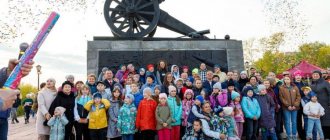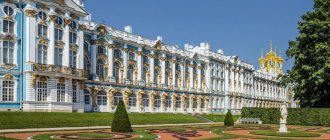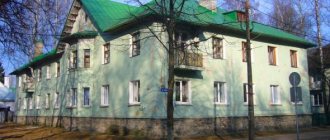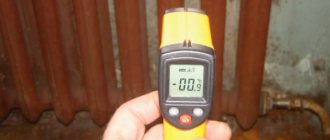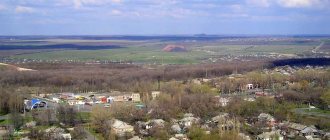I have lived my entire adult life in Yekaterinburg, the Ural capital. Many visitors compare Yekaterinburg with little Moscow. I don’t even know if I can agree with this opinion. On the one hand, this similarity corresponds to ancient mansions, which, unfortunately, are adjacent to skyscrapers and can generally disappear from the face of the earth overnight, demolished by someone unknown. On the other hand, the former Sverdlovsk is a modern industrial city with the pros and cons inherent in this concept.
My age is steadily increasing, and although I am slightly over forty, I began to think about a quiet corner where I can spend weekends away from the bustle of the city, and then move completely and live in retirement. I would like this town to be not far from Yekaterinburg. After all, here are native places and close people.
In my dreams, I have long lived in a small town where life moves slowly. Since I am a big romantic, beautiful nature and a pond would be very welcome. And since I am a child of civilization, I would like to have at least a minimum of amenities at hand: shops, a clinic.
I started looking for housing for little money, and my choice fell on the small Ural town of Degtyarsk. I did something completely desperate for me: I went alone on reconnaissance to a completely unfamiliar city, having no information or acquaintances. I just knew the address where a new house was being built. By the way, few houses are being built in Degtyarsk. But I wanted an apartment in a new house.
Mosaic "Lenin" on the central square of Degtyarsk
It takes a little over an hour to travel 60 km by regular bus, that is, in terms of time it’s the same as getting from one district of Yekaterinburg to another, for example from Khimmash to the city center. I got off the bus and found myself in a village with dilapidated houses and dogs in such numbers as I had probably never seen in my entire life. True, the dogs seemed inert and indifferent to people to me, which made me a little happy. I reached the construction site in 15 minutes.
Private sector and barracks
Along the way, I came across four rural stores with a full range of grocery and household goods. After interviewing the sellers, I learned that they were satisfied with life and the beauty of the local nature. By the way, the nature there is really worthy of admiration; the whole city is bordered by forests. I asked a question about crime, to which I received the answer: here, like everywhere else, everything is in order. Take it as you wish.
Road to the lake
From the first trip, I concluded that here in Degtyarsk, in general, everything is not bad, and the construction site seemed busy to me: a three-story house was being built. It is impossible to build high-rise buildings in Degtyarsk; there are exhausted mines nearby.
History of Degtyarsk
Degtyarsk is a fairly young city. It began at the beginning of the 20th century with two small villages of coal burners and tar workers - Revdinskaya and Severskaya Degtyarok. Residents were engaged in burning coal, distilling tar and tar. Hence the name - Degtyarsk (from the word “tar”).
Later, copper was found at the foot of Mount Labaz, which rises here. This is how V. Golovko describes this event in the book “Revda and Degtyarsk” (1970):
“Shortly before the revolution, Thaddeus Semkov settled in Degtyarsk. He transported coal to the Revdinsky plant. This artisan was an inquisitive person who knew his native Ural region well. One day he was walking through a swamp near a village and noticed an interesting phenomenon. The banks of the Istok River were overgrown with thick grass, but the bed of the small stream was devoid of any vegetation. The stream originated from a spring, around which there was also not a blade of grass. Thaddeus was very interested in this. He decided to test his assumption. I found an iron nail and put it in a conspicuous place in the fontanel. And the next day he came again to the spring and pulled the nail out of the water. It all became heavy, covered from tip to cap with copper - as if it was made of copper. Thaddeus realized that copper was dissolved in the water, and therefore there were copper ores in the mountain. He filled a bottle with water and took it home to Yekaterinburg. And a few days later news came from there: a lot of copper was found in the water. And soon a deep pit was laid on the mountainside and copper ore began to be mined. The deposit was named after the place where it was discovered - Degtyarsky."
The Degtyarskoe copper pyrite deposit turned out to be the largest in the world. In 1911-1913, exploration mines were founded here, and in 1914, production mines “Moscow” and “Petersburg” (later renamed “London”) were founded. In 1928, two more mines were founded: New York and Berlin. Later, all four shafts were connected to each other at several levels. In 1936, the mines were renamed: “London” - to “Komsomolskaya”, “Berlin” - to “Bolshevik”, “New York” - to “Pioneer”, and then to “Pervomaiskaya”.
In the 1933-1940s, the Kapitalnaya No. 1 and Kapitalnaya No. 2 mines were built. These two mines became the largest. The mines suffered from oxidation processes and fires. The village of Degtyarka arose. On November 18, 1954, Degtyarsk received city status.
During the time of the New Economic Policy (1925-30), copper mining in the local mines was carried out under concession rights by the Americans. Among the workers were Richard Nixon's parents. In the summer of 1959, the future 37th US President Richard Nixon (then he was still vice president) unexpectedly visited the city of Degtyarsk during a trip to Russia. During the visit, he even went down into the Kapitalnaya No. 2 mine.
In memory of this event, on July 13, 2022, 75-year-old pensioner Pyotr Kikilyk decided to place a commemorative plaque on the facade of the building on Kalinina, 31a with the inscription “This building of the Degtyar plant management was visited by the 37th President of the United States, Richard Milhouse Nixon, in 1959. From the grateful residents of Degtyarsk and the Urals. July 2019." However, this heinous crime was stopped by the valiant security forces. While trying to install the sign, the pensioner was captured, handcuffed and then kept in police custody all night, after which he was sent to court...
Richard Nixon in the mine
The world's first industrial installation for bacterial leaching of copper was tested at the Degtyarsky mine. A liquid saturated with special bacteria was pumped into the mine, which, in the course of their life activity, converted ores that were insoluble in water into highly soluble ones. After this, the enriched solution was pumped to the surface and copper was extracted from it.
The mined ore was transported to the Revda SUMZ, notorious for its impact on the environment.
After several decades, ore reserves began to deplete. In 1970, the Kapitalnaya No. 1 mine closed, and in 1994, the Kapitalnaya No. 2 mine closed. The sulfur ore reserves were completely depleted in 1979, and the copper-zinc ore reserves in 1995.
Due to the closure of the mine in 1995, silting of the mine workings began, starting from a maximum depth of 610 meters. The mine's entire underground voids were flooded in 1999. To neutralize the acidic environment, milk of lime was poured inside.
The enterprise closed, leaving behind a real zone of environmental disaster on the industrial territory. The mining town turned into a depressed area. Many residents are forced to travel to work in Yekaterinburg.
According to the 2010 census, the population of Degtyarsk is 15,522 people.
With the assistance of regional officials, a company registered in Cyprus offshores plans to build an antimony plant in Degtyarsk. Residents of the city are actively protesting against the start of operation of a harmful enterprise, since such a plant will further complicate the difficult environmental situation in Degtyarsk.
Industry
- Branch
- Degtyarsky bakery
- Degtyarskaya garment factory
- Lime plant (extraction and processing of “white stone”)
Previously: Degtyarskoye Mining Department (mining and beneficiation of copper ore). It is planned to build an antimony plant.
| External video files | |
| Video about Degtyarsk | |
| [www.e2-e4.tv/f/news/eksklyuziv/2012/06/15/ne_pridumali_gde_provesti_vyihodnyie_ayda_v_zabroshennyie_po.html Report from e2-e4.tv about an abandoned mine in Degtyarsk] | |
Sights of Degtyarsk
From the largest mines of Degtyarsk (“Capital No. 1” and “Capital No. 2”), two waste heaps remain, rising high above the city. One of them is right next to the bus station - from the Kapitalnaya No. 2 mine. Waste heaps consist of waste, waste rock lifted from mines. It’s worth climbing at least one of the waste heaps and looking at the city and industrial zone from a bird’s eye view.
The second waste heap (Capital No. 1 mine) is located to the north. Next to it is the flooded Pyrium quarry.
On the site of the Degtyarsky mine there are abandoned administrative and utility buildings. The plant management building is located near the waste heap. In front of it stands a monument to the miners - the founders of the city, as well as a monument to the pilot Sergei Safronov.
A sad story happened in Degtyarsk on May 1, 1960. On this day, the military spotted an American U-2 reconnaissance aircraft in the sky, piloted by Francis Powers. In addition to Powers' plane, his own plane, the MiG-19, was mistakenly shot down at the same time. The plane crashed on the outskirts of Degtyarsk (now there is a monument there too - behind the house on Sovetskaya, 119). Pilot Sergei Safronov died. Every year on May 1 (the anniversary of the tragedy) flowers are laid at the monument.
On the territory of the former enterprise (entrance is free), the ore sorting building has been preserved. Of all the surviving mine buildings, this is the most impressive. The ore lifted from the mine came here and was then loaded into railway cars. The ore sorting building has become one of the symbols of Degtyarsk. Not a single photo report from this city can be done without it.
In some places, impressive green stalactites containing copper hang from the walls and ceiling. There is a greenish coating everywhere. The building was literally soaked through and through with toxic salts of copper and sulfur.
There are puddles and lakes with purple water all around. It is essentially an acid and is very dangerous.
There is also a brown-yellow river flowing here. It also has something to see - a hydro-copper workshop. To get there, you need to walk a few hundred meters along the railway from the ore sorting facility, then turn along a small path to the left. The hydrocopper workshop is a kind of grid of logs and wooden gutters through which the water of the stream flowing here, rich in copper compounds, passes through for a couple of hundred meters. This “workshop” was built during Soviet times to extract additional copper. Iron filings were thrown into the space between the logs. A chemical reaction took place, and copper in the form of sediment sank to the bottom of the gutters. 180-200 tons of copper were mined per month.
Entrance to the territory of the former enterprise is free. And the mine shafts are covered with concrete. There is a lime factory nearby.
It is also interesting to stroll around the city itself.
Pay attention to the paving stones on the central section of Kalinina Street. They say that it was paved by German prisoners of war.
There are also residential buildings built by the Germans with an unusual architecture for the Urals, next to the Palace of Culture and a school that deserve attention.
The Palace of Culture is interesting for its stucco work; it’s worth going inside. The Degtyarsky Historical and Industrial Museum, founded in 1987, is located within its walls. Tel. +7 (34397) 6-33-01.
There used to be fountains in the park in front of the cultural center.
A huge portrait of V.I. is installed in front of the Palace of Culture. Lenin, made of mosaic.
The local school building with huge columns is also interesting.
And near the bus station there is a monument in the form of a trolley. The words on it read: "The Miner's Share of the Copper Mountain."
At the local cemetery, on the site of a mass grave of German prisoners of war, a memorial was created with groups of black crosses and a memorial plaque.
It’s worth visiting Mount Labaz (also known as Karaulnaya). On the slopes of the mountain you can see numerous cracks ranging in width from a few millimeters to meters, some of which go far down. There are also multi-meter gaps here—collapse zones. And all because the depths of the mountain are dotted with mines.
At the top of Labaz there are small rocky outcrops. On one side of the mountain you can see the city, and on the other - Lake Izhbulat. In the past, there was a suspension bridge leading to the mountain.
On the other side of the city (behind the recreation center) rises another mountain – Suharnaya.
The western slope of Mount Labaz has been partially demolished. The Degtyarsky quarry operated here, from the rock of which gold and silver were extracted. And the waste rock was used to fill up the failures on the slopes of Labaz. They worked out the quarry and abandoned it without reclamation. They earned money - and okay... A sad sight.
Another attraction of Degtyarsk is the flooded Vyazovsky lime quarry. The mined limestone was used as a flux in metallurgical production, and also went to the Degtyarsky mine to neutralize mine water. Developed from approximately 1930 to the 1970s. The water in the quarry is quite clean and transparent.
Political life
| The information in this section is out of date. You can help the project by updating it and then removing this template. |
At the regional elections held on October 8, 2006, 12,487 voters were included in the voting lists of the Degtyarsk City Election Commission. 3069 people took part in the elections, which amounted to 24.58% of the total number of voters.
Voting results for the elections to the Regional Duma in the Degtyarsky urban district
- United Russia - 1400 people - 59.33%
- Russian Party of Pensioners - 640 - 17.37%
- Homeland - 101 -3.07%
- PCa - 258 - 8.41%
- Communist Party of the Russian Federation - 216 - 7.04%
- LDPR - 136 - 4.43%
- Free Russia - 60 - 1.96%
- Apple - 49 - 1.60%
- Patriots of Russia - 39 - 1.27%
- People's Will - 9 - 0.29%
- Against all lists of candidates - 130 - 4.24%
In the elections for the head of the municipality, held on October 12, 2008, the incumbent head, Valery Trofimov, won by a margin of several hundred votes. Second place was taken by the candidate from the LDPR party, chairman of the Degtyarsk City Duma Nikolai Perkov. Third place went to United Russia candidate Andrei Derbenev. The re-elected mayor Valery Trofimov ran in the elections as a self-nominated candidate. His candidacy was not supported by the United Russia party, of which he is still an active member. The leadership of the regional branch of United Russia, despite earlier promises to expel self-nominated candidates from the party for violating discipline, has reconsidered its position.
Bazhov about Degtyarsk
In the tale “The Copper Share,” the writer Pavel Bazhov writes about Degtyarsk. The first time he visited here (on Mount Labaz) even before the development of the mines:
“From the top of Labaz the view that was usual for our region of those years opened up: a hilly forest desert with regular squares of clearings, shapeless mowing areas and rare villages. To the north, very close, stood Mount Volchikha, to the south, fifteen kilometers away, that same Balaban, where I had to go ... "
And a few years later the places changed:
“Copper ore is now exported from under Mount Labaz not by carts, but by entire trains. The village near this mountain also does not look like a village. This is a town that counts its population in the tens of thousands.”
Excerpt characterizing Degtyarsk
- Now, in order to please Moscow girls - il faut etre melancolique. Et il est tres melancolique aupres de m lle Karagin, [one must be melancholic. And he is very melancholy with m elle Karagin,” said Pierre. - Vraiment? [Really?] - said Princess Marya, looking into Pierre’s kind face and never ceasing to think about her grief. “It would be easier for me,” she thought, if I decided to trust someone with everything I feel. And I would like to tell Pierre everything. He is so kind and noble. It would make me feel better. He would give me advice!” – Would you marry him? asked Pierre. “Oh, my God, Count, there are moments when I would marry anyone,” Princess Marya suddenly said to herself, with tears in her voice. “Oh, how hard it can be to love a loved one and feel that... nothing (she continued in a trembling voice) you can’t do for him except grief, when you know that you can’t change it.” Then one thing is to leave, but where should I go?... - What are you, what’s wrong with you, princess? But the princess, without finishing, began to cry. – I don’t know what’s wrong with me today. Don't listen to me, forget what I told you. All Pierre's gaiety disappeared. He anxiously questioned the princess, asked her to express everything, to confide in him her grief; but she only repeated that she asked him to forget what she said, that she did not remember what she said, and that she had no grief other than the one he knew - the grief that Prince Andrei’s marriage threatens to quarrel with his father son. – Have you heard about the Rostovs? – she asked to change the conversation. - I was told that they would be here soon. I also wait for Andre every day. I would like them to see each other here. – How does he look at this matter now? - Pierre asked, by which he meant the old prince. Princess Marya shook her head. - But what to do? There are only a few months left until the year ends. And this cannot be. I would only like to spare my brother the first minutes. I wish they would come sooner. I hope to get along with her. “You have known them for a long time,” said Princess Marya, “tell me, hand on heart, the whole true truth, what kind of girl is this and how do you find her?” But the whole truth; because, you understand, Andrei risks so much, doing this against the will of his father, that I would like to know... A vague instinct told Pierre that in these reservations and repeated requests to tell the whole truth, Princess Marya’s ill will towards her future daughter-in-law was expressed, that she I wanted Pierre not to approve of Prince Andrei’s choice; but Pierre said what he felt rather than thought. “I don’t know how to answer your question,” he said, blushing, without knowing why. “I absolutely don’t know what kind of girl this is; I can't analyze it at all. She's charming. Why, I don’t know: that’s all that can be said about her. “Princess Marya sighed and the expression on her face said: “Yes, I expected and was afraid of this.” – Is she smart? - asked Princess Marya. Pierre thought about it. “I think not,” he said, “but yes.” She doesn't deserve to be smart... No, she's charming, and nothing more. – Princess Marya again shook her head disapprovingly. - Oh, I so want to love her! You will tell her this if you see her before me. “I heard that they will be there one of these days,” said Pierre. Princess Marya told Pierre her plan about how, as soon as the Rostovs arrived, she would become close to her future daughter-in-law and try to accustom the old prince to her. Boris did not succeed in marrying a rich bride in St. Petersburg and he came to Moscow for the same purpose. In Moscow, Boris was indecisive between the two richest brides - Julie and Princess Marya. Although Princess Marya, despite her ugliness, seemed more attractive to him than Julie, for some reason he felt awkward courting Bolkonskaya. On her last meeting with her, on the old prince’s name day, to all his attempts to talk to her about feelings, she answered him inappropriately and obviously did not listen to him. Julie, on the contrary, although in a special way peculiar to her, willingly accepted his courtship. Julie was 27 years old. After the death of her brothers, she became very rich. She was now completely ugly; but I thought that she was not only just as good, but even much more attractive than she was before. She was supported in this delusion by the fact that, firstly, she became a very rich bride, and secondly, that the older she became, the safer she was for men, the freer it was for men to treat her and, without taking on any obligations, take advantage of her dinners, evenings and the lively company that gathered at her place. A man who ten years ago would have been afraid to go every day to the house where there was a 17-year-old young lady, so as not to compromise her and tie himself down, now went to her boldly every day and treated her not as a young bride, but as a acquaintance who has no gender. The Karagins' house was the most pleasant and hospitable house in Moscow that winter. In addition to parties and dinners, every day a large company gathered at the Karagins, especially men, who dined at 12 o'clock in the morning and stayed until 3 o'clock. There was no ball, party, or theater that Julie missed. Her toilets were always the most fashionable. But, despite this, Julie seemed disappointed in everything, told everyone that she did not believe in friendship, nor in love, nor in any joys of life, and expected peace only there. She adopted the tone of a girl who had suffered great disappointment, a girl as if she had lost a loved one or had been cruelly deceived by him. Although nothing of the sort happened to her, they looked at her as if she were one, and she herself even believed that she had suffered a lot in life. This melancholy, which did not prevent her from having fun, did not prevent the young people who visited her from having a pleasant time. Each guest, coming to them, paid his debt to the melancholy mood of the hostess and then engaged in small talk, dancing, mental games, and Burime tournaments, which were in fashion with the Karagins. Only some young people, including Boris, delved deeper into Julie’s melancholic mood, and with these young people she had longer and more private conversations about the vanity of everything worldly, and to them she opened her albums covered with sad images, sayings and poems. Julie was especially affectionate towards Boris: she regretted his early disappointment in life, offered him those consolations of friendship that she could offer, having suffered so much in life herself, and opened her album to him. Boris drew two trees in her album and wrote: Arbres rustiques, vos sombres rameaux secouent sur moi les tenebres et la melancolie. [Rural trees, your dark branches shake off darkness and melancholy on me.] Elsewhere he drew a tomb and wrote: “La mort est secourable et la mort est tranquille “Ah! contre les douleurs il n'y a pas d'autre asile.” [Death is salutary and death is calm;
Map of attractions
Symbols on the diagram:
1 - Degtyarsk Palace of Culture, nearby houses built by prisoners of war, a school, paving stones st. Kalinina; 2 - bus station; 3 — waste heap of the Kapitalnaya No. 2 mine; 4 - mining administration building, next to it is a monument to the miner and pilot Safronov; 5 — ore sorting building; 6 - hydro-copper shop; 7 - Degtyarsky quarry; 8 - Mount Labaz; 9 — waste heap of the Kapitalnaya No. 1 mine; 10 - Pyrium quarry; 11 - Lake Izhbulat; 12 – Vyazovsky lime quarry; 13 - cemetery for German prisoners of war.
Neighborhoods of Degtyarsk
The surroundings of the city of Degtyarsk are also interesting. In the village of Kungurka there is the Grokhotun waterfall, and closer to Revda (below the Elchevsky pond) there is the Elchevsky waterfall.
In the Degtyar forests, the Dyrovaty Kamen and Balaban rocks are popular among tourists.
From Degtyarsk you can walk to Mount Kamennaya (Kamenny tract), and from there you can go to Revda.
How to get to Degtyarsk?
By car from Yekaterinburg, go towards the town of Polevsky, after the village of Kurganovo, turn right - towards Degtyarsk. Distance – 53 kilometers.
There is another way: along the Perm highway, then in the Revda area turn to Degtyarsk. The distance from Yekaterinburg will be 60 kilometers.
You can easily get there by public transport. Buses to Degtyarsk run from the southern bus station of Yekaterinburg.
Pavel Raspopov
UraloVed.ru
See also:
Perm copper and its history
Mednorudyanskoye field
The mystery of Mount Azov

